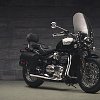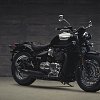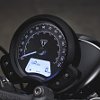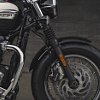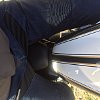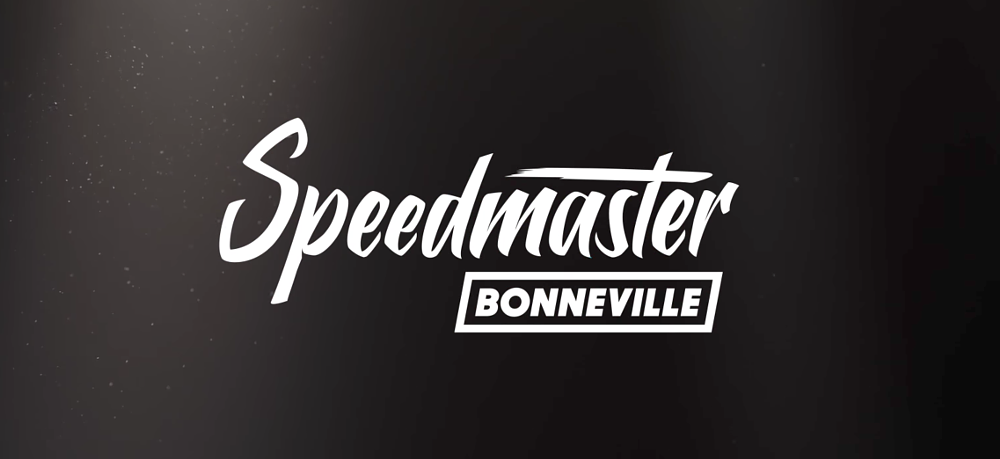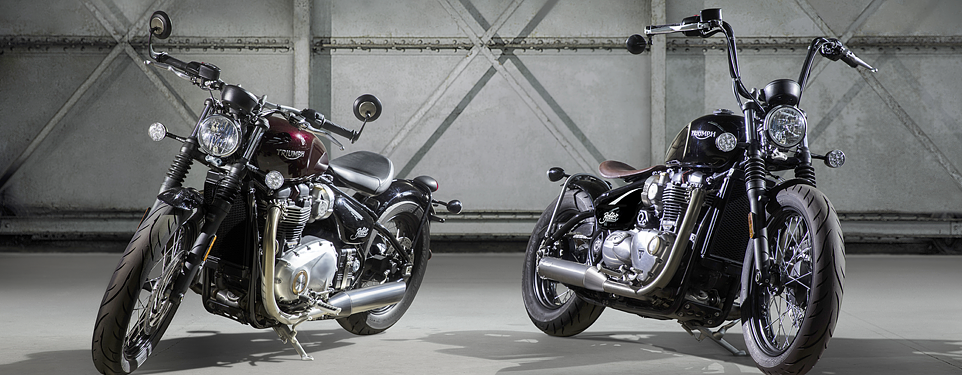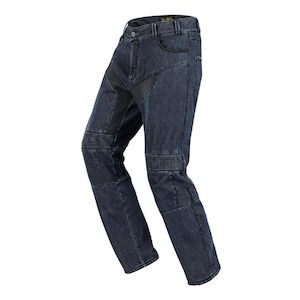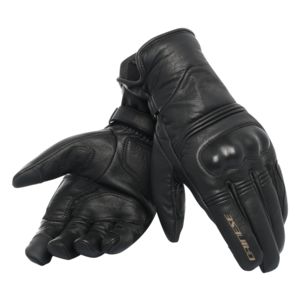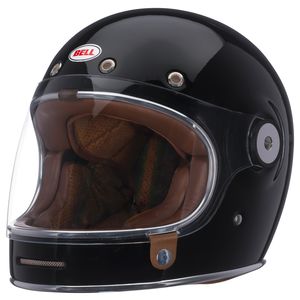I didn’t exactly score points with my wife when I asked her to get up at 5 a.m. and drive me through snow and single-digit temperatures to the Kansas City airport so I could fly to San Diego for the launch of the 2018 Triumph Bonneville Speedmaster.
I keep telling her such junkets are actually hard work (which is true) but she keeps not believing me (which is understandable).
In this case, however, sun, warm temperatures, and a fun 150-mile loop over some of my favorite SoCal roads just about made up for the fact that, as usual, I logged several hours of airplane economy seat time for every hour of saddle time. Overall, I came away with as complete an impression of the new Speedmaster as possible in a single day. It's quite different from the twin-shock motorcycle it replaces, but it is still the American-style cruiser in Triumph’s increasingly diverse “Modern Classics” family.

Triumph upped its Modern Classic game when it re-introduced the famed T120 trademark for the 2016 model year, attached to a new liquid-cooled 1,197 cc parallel-twin motor. For 2017, Triumph introduced a single-seat Bonneville Bobber, with a slightly milder engine tune and a "Softail"-style rear swingarm. The Bobber and its antisocial brother, the Bobber Black, were immediate hits with Triumph dealers and customers.
Enter the new Speedmaster — a motorcycle with the motor, frame, and 16-inch wheels of the Black, along with a cruiser’s forward controls, provision for a passenger, and a larger fuel tank. It’s a cruiser-bobber; you could call it a "crobber," but Triumph would probably prefer "bruiser." The Speedmaster’s primary function is still to get you to the roadhouse in style, but now you can travel to a roadhouse in the next county, and bring the old lady (which I mean in the least gender-specific way).

From an engineering perspective, that "get-to-the-roadhouse" design brief is not particularly challenging. And I have to admit that, as an aging-ex-club-racer/less-is-more/form-should-follow-function guy sitting on that plane on the way to San Diego, I wondered what I’d find to say about a motorcycle with riding position more suited to watching a football game with a beer and a bag of chips. And what about those bronze-colored knurled rings on the tops of fuel-injection throttle bodies to carefully disguise them as carburetors?
When I walked into the hotel, I saw that Triumph had parked a new Speedmaster in the lobby. (You could park in the lobby too, if you were willing to book a dozen or more rooms for an entire week.) So before I’d even checked in, I found myself thinking, “Wow, they really did a nice job on that pinstriping, and the throttle bodies really do look like carbs. Cool!”
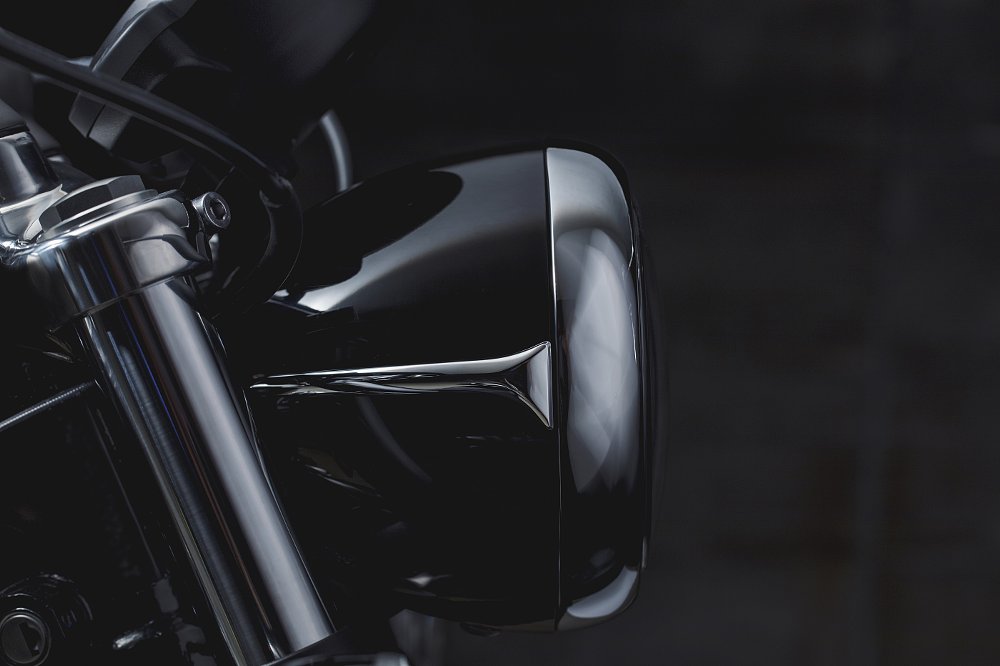
Normally, when I write up a test or first ride impression, I leave the motorcycle’s looks out of it. After all, you, the reader, can see the photos and decide whether you like the bike’s looks for yourself. But Triumph put a larger-than-normal effort into the new Speedmaster’s walk-up first impression, so it's worth talking about.
Stylistically, with its hidden rear suspension, the Speedmaster evokes the iconic hard-tail Speed Twin of the late 1940s more than the twin-shock Bonnevilles of the 1960s and ’70s. The designers did a good job of using the chromed headers to sweep your eyes past the low-profile radiator and on down to the engine cases, which have a few more tasteful bronze accents and a triangular Union Jack-derived logo. You won’t notice the plumbing for the catalytic converter, which, in another bit of design sleight-of-hand, is concealed between the frame rails.

The small, single headlight and single gauge with analog speedometer are both handsome; they evoke a period bike without slavishly imitating one. The switchgear is clean and Triumph took care to deliver modern functionality without a plethora of buttons, knobs, and displays that would be out of place on a bike meant to make the rider feel like Johnny Strabler (with a small but hopefully just-comfy-enough passenger seat for the Kathie Bleeker in your life.)
The next morning, we got a press briefing from Triumph’s American PR lead, Phil Read (yes, his dad was that Phil Read) and Steve Sargent, Triumph’s Chief Product Officer. These talks are a mix of occasionally useful engineering insights and cheerleading. Adults stand up, straight-faced, and say things like, “The key is located behind the rider’s right leg, for an uninterrupted view of the road,” as if you’ve ever found yourself thinking, “I can’t see past my ignition key.”
Sometimes, there’s a show-and-tell of interesting components, or at least photos of things like a crankshaft or a cutaway view of throttle bodies. This time, the most interesting things to look at were two "Inspiration Kits" dubbed the "Highway" and "Maverick." The slightly more badass, blacked-out Maverick option package has a solo seat; it’s basically a Bobber Black with a larger fuel tank and forward controls. The Highway kit actually changes the bike’s functionality with a windscreen, two small leather saddlebags, a "comfort" seat and a passenger backrest with a small luggage rack. I thought the windshield looked like a good option and coyly asked if we’d be riding these bikes too, thinking that if the answer was yes, I’d angle for the Highway model. But sadly, they were on display only.


Although there were only seven journalists, we were still split into two riding groups — a wise decision by Triumph, since the riding IQ of motorcycle journalists is an inverse-square function of group size. My group was led by a charming young guy named Ernie, and I was pulling my helmet on before I realized he was Ernie Vigil. I had a moment of thinking, "OMG, will I be able to keep up?" But he was a smooth and sensible group leader.
We headed off up Highway 101, along the beach in North County San Diego. It was sunny, the surf was up, and it was Martin Luther King Day, so quite a few people had the day off. The coast road was crowded. Cruising along at slow speed, stealing a glance over at a few surf breaks while keeping an eye on heavy traffic, I realized that I was testing the Speedmaster in its normal, stop-and-go habitat. It acquitted itself admirably. The seat’s low and the bike has a narrow waist to boot; the cable-operated clutch is remarkably light and the ride-by-wire throttle is easy to twist. Both clutch and front brake levers are adjustable for those of us with small hands.
The Speedmaster certainly has plenty of grunt in situations where you want to close (or open) a gap in traffic. It has the HT 1200 motor, meaning it’s the high-torque tune, with significantly more torque (and power) in the 3,500-5,500 rpm midrange than the HP motor. The T120 crankshaft is much heavier than, say, the Thruxton’s and as a result the Speedmaster pretty much makes downshifting optional. Unless you have come to a complete stop, you can roll on the throttle and pull away smoothly in almost any gear.

Slow-speed handling is neutral and confidence-inspiring, and U-turns are easy — which is a trait journalists love, because we do a lot of U-turns during photo sessions. The rear brake was easy to modulate in slow-speed maneuvers. I noticed things like manhole covers. Like a lot of muscular cruisers, the Speedmaster rolls on a radial front tire and a bias-belted rear tire with a (lack of) compliance that belies its ample sidewall. The forward controls meant that all my weight was on the seat; there was no way to anticipate a bump and absorb it with my legs. I assume a 140-pounder like me would have benefited from softening the preload (the only adjustment) on the stock KYB rear shock, which allows for just under three inches of suspension travel.
We turned east off the coast road for a short freeway stint. The only time I really missed a tachometer was when I tried to pinpoint the revs at which the footrests, handlebar, or seat and tank vibrated. Each component seemed to have its own frequency; they didn’t all vibrate at once. It was really only noticeable above the range where the motor was happiest.
Our lunch destination was the rustic café on the top of Mount Palomar. Years ago, when I lived in San Diego, Palomar’s tight and twisty South Grade and the faster, flowing, and technical East Grade were part of my basic road-testing route. Although that area’s more of a sport-bike haunt, it’s a great test of any motorcycle’s handling package.

No matter what I’m riding, I instinctively trail-brake into corners, which come thick and fast on Palomar’s South Grade — there are more than 20 switchbacks on the 12.5-mile, 4,300-foot climb. The Speedmaster’s got a relatively primitive twin-disc setup; the rotors don’t float and the twin-pot Brembos do. That said, the brakes are completely adequate, with good feel and no perceptible fade – even though I rode it harder than most owners usually will. The 41 mm KYB cartridge fork gave me nothing to criticize. Once or twice, I came across a skiff of sand in some corners; I never felt the stock ABS kick in, although I was glad to have it.
The bike’s mid-corner manners are good up to the point where the footpeg feelers touch down. I did not feel compelled to lean it any further, even though the tires were up for more. My problem was that the feet-forward layout made it hard for me to use my body in the turns. (Towards the end of the ride I devised a way to lock my outside knee into the tank by doing a sort of calf-raise on the outside footrest, which allowed me hang off ever so slightly and transfer some weight to the inside footrest, but it was an ergonomic work-around, at best.)

The Triumph guys made a point of telling me that the Bobber Black’s mid-mount foot controls will bolt right on to the Speedmaster. Presumably they’re among the 130 accessories available at launch. I know I’d be far happier riding with my feet under me instead of out front, La-Z-Boy style, but I think that if I could adjust the ergos to suit my riding style, I’d no longer be satisfied with the Speedmaster’s ground clearance.

Coming off corners, it’s fun. Some of the first Bonneville 1200s were criticized for jerky fueling off a closed throttle, but the bike I rode was perfect. It pulls pretty hard at any revs and I never found myself thinking, "Oops I’m in the wrong gear." According to Triumph’s presentation, there’s a broad torque plateau — it’s so flat that calling it a peak seems misleading — from 3,500 to 4,500 rpm. Once I got used to those low revs, I started shifting at what I assume was around 4,500. But, it will spin to 7,000, so there’s still half as much again if you want it. That’s great on technical bits of road. If I could see the next corner coming up fast, I just left the throttle open; the rev limiter never kicked in once, so I’d say that my own subconscious rev limiter is set lower than the one installed at the factory.

Once, on the fast and flowing East Grade descent, I felt a lack of rebound damping that made me think the shock was overheating. I blame Ernie Vigil.

The next hour was spent on scenic and rolling two-lane roads, wending our way back towards the coast with a stop at the locally famous Julian Pie Company. I used this stretch to experiment with the cruise control (easy, intuitive). I rarely find myself thinking this, but the Speedmaster has enough torque and flywheel effect and is geared tall enough to get by with fewer gears. Both fifth and sixth gears feel like overdrives, and at 65 I could definitely hear each of the twin’s asymmetrical firing pulses.
The original Bonneville had a 360-degree crank (in this configuration, both pistons move up and down together, and they take turns firing.) All of the current T120 motors have a 270-degree crank; one crankpin’s been rotated 90 degrees (so the two cylinders fire 270 degrees apart, then there’s a 450-degree pause.)
As far as I know, the first Triumph to come stock with a 270-degree crank was the Bonneville America in 2002. At the time, what Triumph really meant by "America" was “sounds something like a Harley.” But this crankshaft phasing is American in another, cooler sense: Fifty years ago, flat-track tuners like C.R. Axtell rephased conventional parallel twins because they got better traction on dirt, and – since one piston’s traveling at top speed while the other’s changing direction – secondary balance forces nearly cancel each other out. That increased the service life of race motors to just-acceptably-ephemeral.
So, the marketing department got a soulful idle; the Speedmaster may not say "potato-potato," exactly, but I could hear it saying something. And the engineers got a parallel twin that doesn’t shake itself to bits. Yes, it vibrates at seven grand, but nothing like an old Norton Commando. And the first major service interval comes at 10,000 miles.
The last part of our route put us on on a divided freeway, California 78 between Escondido and Oceanside. Since it was SoCal and a partially observed holiday, rush hour was minimal. That meant cruising at 75 mph or more just to keep up with commuters texting at the wheel of their SUVs. After half an hour of continuous wind blast, I was less than enthusiastic about a wide handlebar that turned my body into a sail, and a seating position that made it hard to lean forward into the wind. I was right to wish for the "Highway" version with its sizeable windscreen.
Still, at the end of the day I was pretty enthusiastic about the new Speedmaster, and not just because a day spent riding anything at 80 degrees in the sun beats a day spent hunkered down in Kansas City at eight degrees. There are other bikes in Triumph’s Modern Classics line that are more my style. (Hint: Phil, get me a long-term Thruxton.) But I can certainly see a market for the Speedmaster.

The base-model Speedmaster comes with ABS as standard equipment. It will arrive in Triumph dealerships beginning in March, and carry a $13,150 MSRP. The bike I rode, with a two-tone tank and hand-painted pinstriping, will sell for a $500 premium. The blacked-out Maverick inspiration kit will add $2,030 and the Highway kit, with that windscreen I wanted so badly on the freeway, will cost $2,225.
Some customers will cross-shop it with the Indian Scout Bobber, which would cost as much or more with optional ABS and a passenger seat. On paper, I don’t see a direct rival to the Speedmaster in the Harley-Davidson lineup. It’s more expensive than a Sportster Roadster (which is somewhat primitive by comparison) but quite a bit less expensive than either a Street Bob or a Fat Bob (both of which are more powerful but quite a lot heavier.) I’d have to ride it back-to-back with its rivals to make an authoritative comparison, but the Speedmaster is an undoubtedly functional motorcycle.

If you want a cruiser that evokes classic British iron, instead of an American V-twin, you won’t be disappointed.





